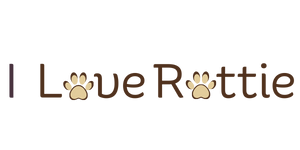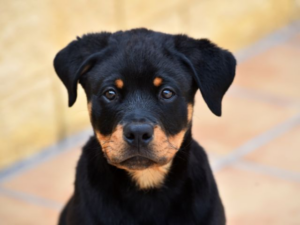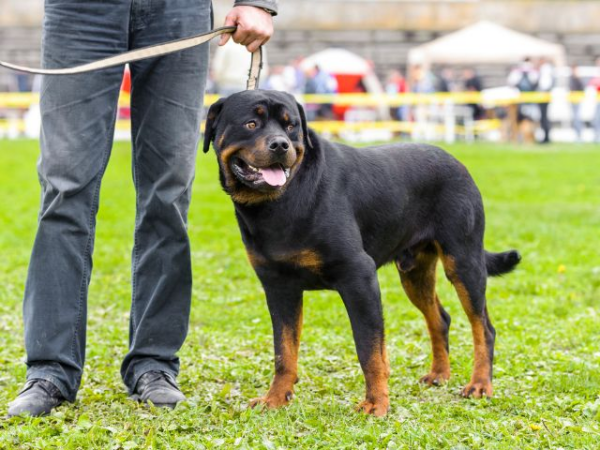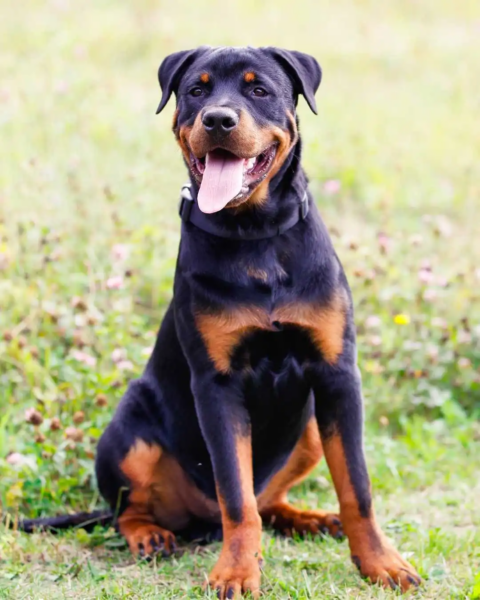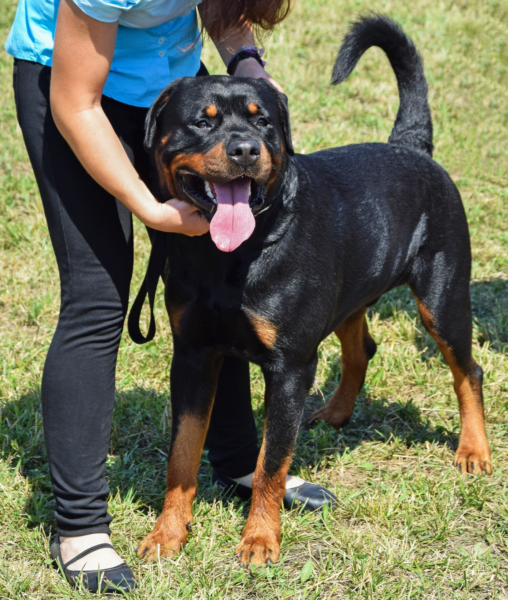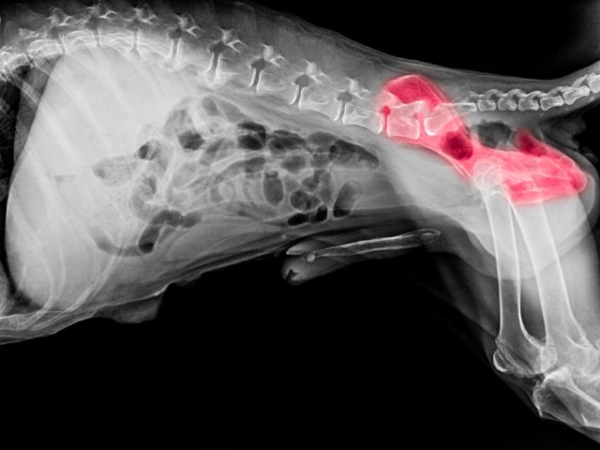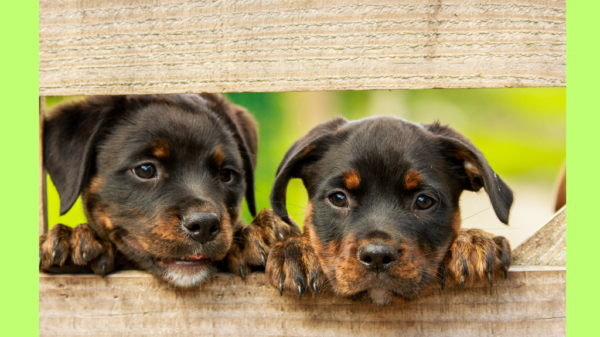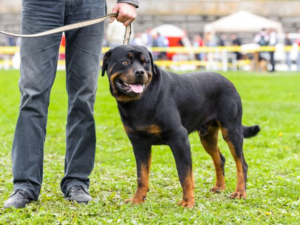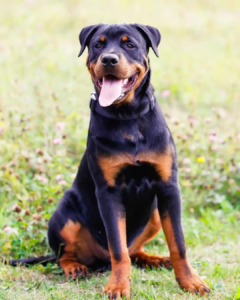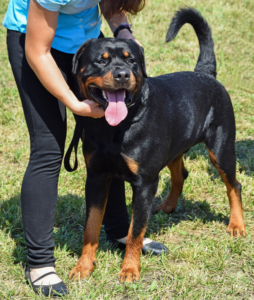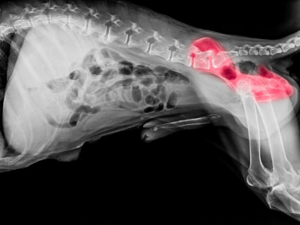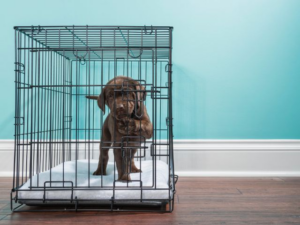Embarking on the journey of potty training your puppy is a crucial step in fostering a clean and harmonious living environment for both you and your newest family member. Successfully teaching your puppy where and when to relieve themselves not only prevents household accidents but also strengthens the bond between you and your furry companion. Potty training requires patience, consistency, and positive reinforcement to guide your puppy toward the desired behavior.
In this comprehensive guide, we will explore effective methods and practical tips to streamline the potty training process. Whether you’re a first-time dog owner or adding a new puppy to your family, understanding the fundamentals of how to potty train a puppy will set the stage for a well-behaved and happy canine companion. So, let’s dive into the essential techniques and strategies that will make the journey of potty training your puppy a rewarding and successful experience for both of you.
If you are interested in crate training your puppy, read here.
Perhaps you may be interested in clicker training, check our article here.
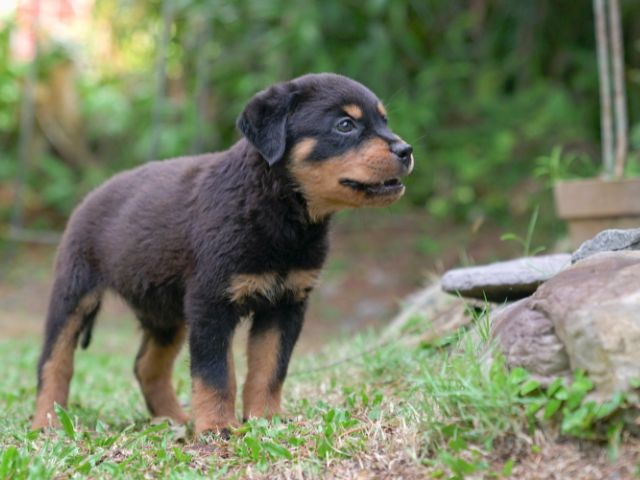
Choose a Spot – the following features are desirable:
● Ideally outside.
This one assumes you have access to the outdoors (whether this be in the form of a garden or perhaps a local park). Highrise dwellers may need to consider the use of balcony space or even an indoor toilet area or litter box. In either of these cases, be sure to keep your hygiene meticulous.
● Easily accessible.
Your puppy should ideally be able to access their toilet area rapidly and without much intervention on your part. If you have the luxury of being able to provide round-the-clock access to an outdoor area this is perfect. If not, you want to try and keep things simple: in the majority of cases, the only thing between your Rottie pup and their potty spot should be an easily opened door.
● Just one spot.
The entire potty training process will be easier for your Rottweiler puppy if you select just one spot to avoid confusion, for example, one particular corner of the yard [1]. This helps keep things consistent, and your puppy will also be able to identify their toilet location by scent, which will help them get things right.

Build a Routine
The vast majority of puppies will need to toilet 10-15 minutes after eating or having a big drink of water (anything more than a couple of licks). Many will also need to relieve themselves within a few minutes of waking up from sleep. Bear these factors in mind and ensure you are providing a routine where your Rottweiler pup is provided with potty breaks at these times.
Potty signs
Signs of needing the toilet are pretty consistent between puppies! Be conscious of your puppy’s cues, and you’ll find that far fewer accidents happen. You’ll likely notice some combination of the following:
● Sniffing the floor or low-down furniture (table legs, door mats etc).
This is your puppy searching for a place they like the smell of, to relieve themselves! Intervene quickly and relocate them somewhere appropriate (like the garden) before it’s too late.
● Restlessness.
Your puppy won’t want to settle and sleep and may seem distracted if trying to play.
● Squatting, or cocking a hindleg.
The very last sign you’ll see before an accident happens! You’ll need to move incredibly quickly if you want to avoid a toileting mishap at this point.
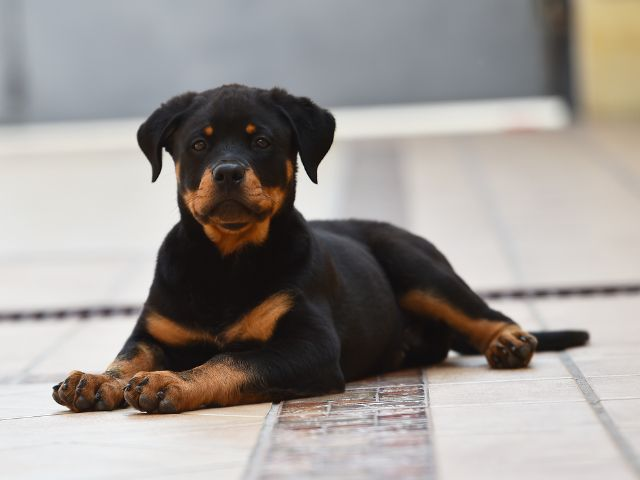
Dealing with Accidents
Tip 1: Provide more potty breaks
Remember that your Rottweiler puppy is still basically an infant and that their bladder is still developing as well as their mind! As a rough rule, you can expect your Rottie pup to need to pass urine at a frequency of 1 hour per month in age while awake. So, a 2-month-old puppy will probably need to urinate every 2-3 hours [2].
Bear in mind too that most puppies need to relieve themselves very soon after eating or drinking, and some puppies will urinate when excited. This is normal and doesn’t necessarily mean that your potty training efforts aren’t working.
Tip 2: Don’t punish
Whilst studies do suggest that positive reinforcement (rewarding desirable behavior) and punishment will be similarly effective in terms of dog training, it’s also well documented that training by punishment will likely result in negative behavioral consequences, and may be inhumane. Please don’t shout at or scare your puppy, or stick your puppy’s nose in accidents. It’s cruel and is certainly not the best way to achieve house training.
One study found that dog owners who reported that they punished their dogs to train them reported significantly higher levels of a stranger and owner-directed aggression, fear, and attention-seeking behaviors compared to owners who did not punish their dogs [3]. If that doesn’t tell you that punishment is not an appropriate way to potty train puppies, then I don’t know what will!
Tip 3: Clean the spot correctly
A Rottweiler’s nose is vastly more sensitive than yours, and your Rottie pup will be able to pick up on the scent of a previously soiled area (making it a more enticing option for future occasions) unless you clean the spot effectively. Use a pet-safe cleaner that removes urine and fecal odors, and follow the manufacturer’s instructions carefully.
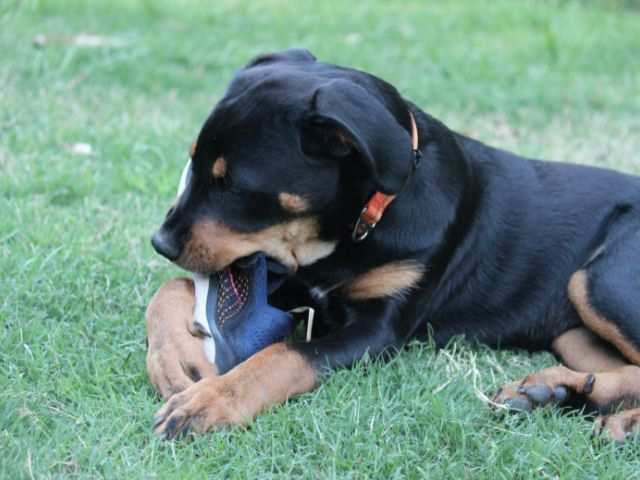
At What Age Should a Rottweiler be Potty Trained?
Research suggests that large breed dogs such as Rottweilers are more likely to become fully potty trained and that this might be achieved earlier in life, compared to smaller dogs [4]. This is likely due to differences in bladder size and metabolism, and certainly works in your favor as a Rottie owner!
Whilst every individual Rottweiler puppy will learn at a different rate, in general, the breed is highly trainable and I would expect a Rottie pup to be fully potty trained by 6 months of age. There will be exceptions to this rule though, so please don’t panic if your 6-month-old pup is still having the occasional accident. Stay consistent with your training, and remember that your puppy is still developing mentally and physically. Sometimes developing flawless bladder control takes a little more time!
How Do You Train a Rottweiler to Pee and Poop Outside?
Training a puppy to pee and poop outside can be achieved by a variety of methods, including the Leash Method, the “No, not there” method, and the By The Clock Method [1]. These methods of puppy potty training are outlined in greater detail below under “The Potty Training Process”.
Training your Rottweiler not to toilet in the house will take time and consistent training; you should maintain realistic expectations throughout and should expect the process to take a few months in total. Be sure to crate train your puppy too, as this will make the house training process significantly easier.
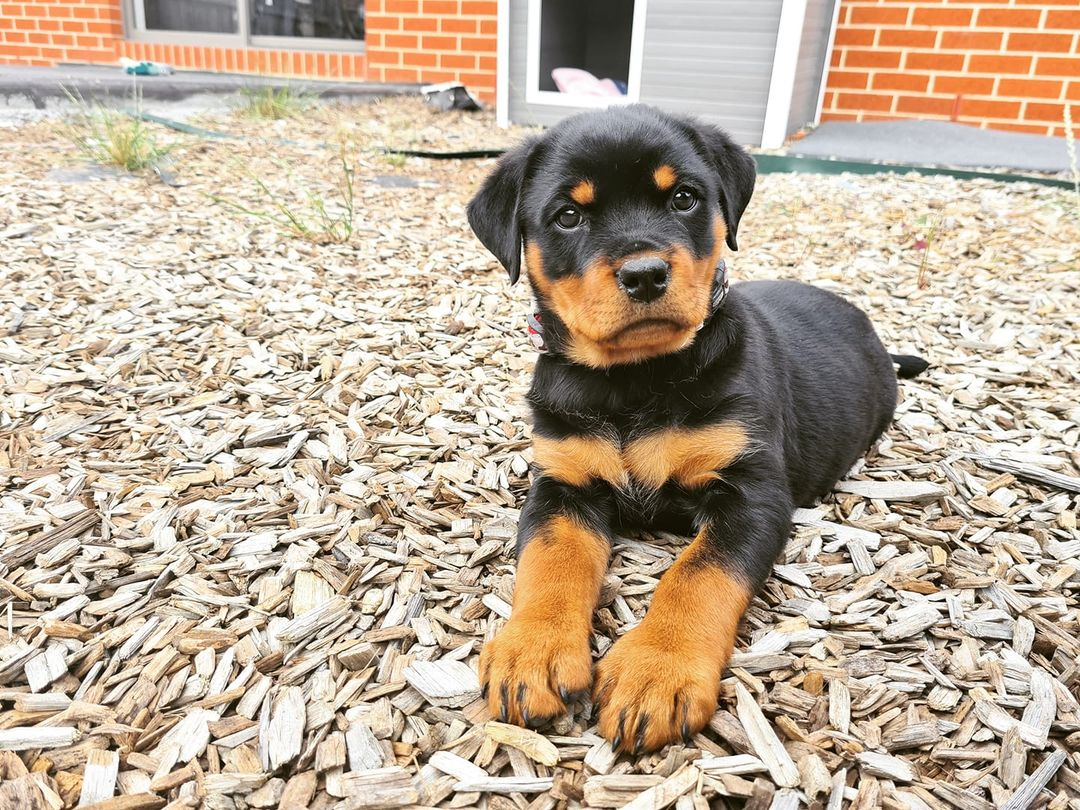
The Potty Training Process
Let’s take a closer look at the methods we can use to potty train a puppy. Which method you choose will depend on personal preference, how much free time you have at your disposal, as well as access to outdoor space. You can always begin potty training with one method and switch if it’s not working out as well as you’d hoped, but do be aware that this could slow the process down a little.
The Leash Method of Potty Training
To begin potty training with the leash method, first select a potty spot for your Rottie. In most cases, this will be outdoors (perhaps in the garden, or a park across the street), but for those in apartments or those who have mobility constraints, it may be indoors, such as an area of the floor covered with puppy pads. A key point is that we want to aim to get your puppy toileting in the same spot every time, so once you’ve picked a location, stick to it!
The next step on this road to house training your puppy is to select a cue (usually this will be verbal) that tells your little one that it’s time to go out. Simple cues like “Let’s go out” work well here. If you’re house training an adult dog, you’ll usually find that simply picking up the leash is enough of a cue for them to know it’s time for an outing!
Next, attach the leash to your puppy and take them to their potty spot. Wait for them to do their business, and be sure to provide plenty of verbal praise and/or petting and attention when they do! This will help your puppy recognize that this is what you want. Most dogs are highly motivated to please their owners and will develop good habits very quickly so long as they understand what you’re asking them to do.
You’ll need to build a routine so that your puppy is taken to their potty spot sufficiently regularly to avoid indoor accidents (which, by the way, are a common and pretty normal part of the house training process). Young puppies will nearly always need to relieve themselves after eating, after drinking, and after waking up from a sleep (usually within a few minutes). So, building a routine to house train your pup that is based on his/her feeding schedule and sleep habits is a great place to start. Stick to the same times every day to help create consistency, so that your puppy knows what to expect.
You’ll also need to watch your puppy whilst inside. If you notice any signs that they need a bathroom break (such as sniffing the floor, restlessness, squatting for girls or cocking a leg for boys), you should immediately take them to the correct spot. If you’re too late, be sure to clean accidents up thoroughly using a pet-safe and odor-eliminating cleaning product.
The “No, Not There” Method of Potty Training
Like the Leash Method, the first step of the “No, Not There” Method is to select a spot where your Rottweiler is going to be allowed to go potty. Again, once you’ve picked somewhere, you’ll stick to the same spot every time.
You can predict when your puppy is likely to need to go potty fairly accurately; this will be after eating, drinking, and sleeping. So, to begin training, make sure you take your puppy to their selected potty spot very regularly and at times when they are likely to need to relieve themselves. Provide praise and treats when they get it right; positive reinforcement is the best road to success!
If you notice signs that your puppy is about to have an accident inside or in some other wrong place (such as a part of the garden that you don’t want them to use), immediately say “NO, not there!” in a firm but not angry voice [1]. Then take your dog without delay to the correct potty spot.
The By the Clock Method of Potty Training
This method is the most time-consuming route to house training dogs, and so may not be practical for every dog owner. However, for many puppies, the By the Clock Method works very well.
To start out, create a “bathroom break” schedule for your dog. For puppy potty training, you’ll want to schedule a bathroom break every 30 minutes (told you it was time-consuming!) as puppies need potty breaks a lot more frequently than adult dog. After all, their bladders are still small and their metabolism is high. Avoid the common mistake of assuming your puppy can hold things in for as long as a full-grown Rottweiler!
As well as creating a schedule, you also need to pick a spot that your dog is now going to think of as their own personal toilet. Like with the other methods, stick to the same place every time.
Now, start taking your puppy to their spot every 30 minutes, giving them ample opportunity to relieve themselves. When they toilet in the right place, celebrate! Reward your puppy with praise, pets and treats. This will help your dog understand that they’ve done a good job.
Over time as your puppy grows and their understanding of where they are and aren’t allowed to toilet improves, you can start to increase the length of time between bathroom breaks. A few accidents along the way are totally expected so don’t be disheartened by them. Accidents happen! However, if you find that these are becoming frequent it may be that you are trying to go too long in-between bathroom breaks and need to step up how often you’re taking your dog outside. Review and adjust your schedule accordingly.
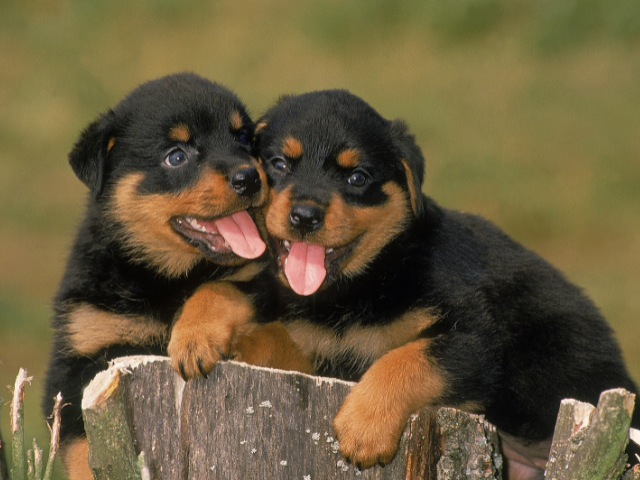
How Do You Know When Your Rottweiler Needs to Go Potty?
Signs that a Rottweiler puppy needs to relieve themself include sniffing, becoming unsettled and squatting (females) or cocking a hindleg (males). These signs are given in greater detail above, under the heading “Potty signs”.
How Do You Potty Train a 6 Month Old Rottweiler?
A Rottweiler puppy who is six months old will need to be potty trained in the same manner as a younger puppy. You can use the Leash Method, the “No, Not There” Method or the By The Clock Method [1].
Whatever the age of your Rottweiler puppy you should always aim to use positive reinforcement to potty train, and should never punish or scare your puppy in a misguided attempt to achieve obedience. Doing so will likely result in more severe behavioral problems down the line.
Summary on Potty Training Your Rottweiler
Whether you’re a first-time dog owner or introducing a new puppy to your family, implementing these strategies will contribute to a well-behaved and happy canine companion. By investing time and effort into potty training, you’re not only fostering a clean living space but also nurturing a positive relationship with your puppy that will last a lifetime.
References
- Getz, P.B. (2021) ‘How to Potty Train a Rottweiler Puppy’, Wag!
- Erace, J. (2022) ‘All the Worst Puppy Problems: Housetraining Hang-Ups’, IAABC Foundation Journal.
- Wise, J. (2022) ‘Exploring relationships between dog training approaches and aggression, fear, and dog-owner relationship’, City University of New York Theses and Dissertations.
- Learn, A., Radosta, L. and Pike, A. (2020) ‘Preliminary assessment of differences in completeness of house-training between dogs based on size’, Journal of Veterinary Behavior, pp.19-26.
